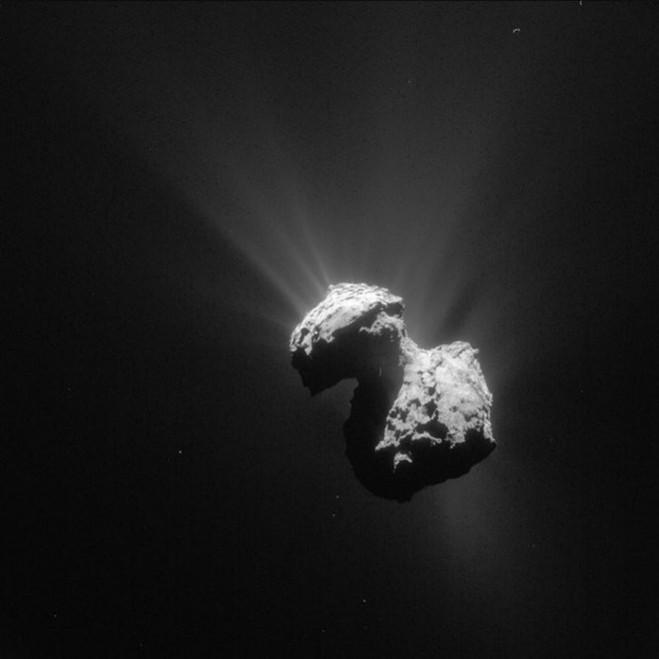
Astronomers had spotted production of molecular oxygen by Comet 67P, also known as Churyumov-Gerasimenko, with the help of Rosetta spacecraft in 2015. And a new study has now solved the mystery behind the production of oxygen on the space rock.
Also Read: Human civilization on Mars: 5 ways how the Red Planet is fatal for humans!
The initial finding was claimed to be the "biggest surprise of the mission," and also a discovery which could transform the understanding about the formation of the solar system.
According to initial explanation revealed by scientists about the finding of oxygen on Comet 67P, the oxygen had frozen inside a space rock around 4.6 billion years ago. The comet passed closely by Sun resulting in thawing the oxygen it possessed.
But this hypothesis is being rethought by researchers because of Konstantinos P. Giapis, a Caltech chemical engineer who works on developing microprocessors.
Molecular oxygen is present on Earth in abundance, but is hardly found anywhere else in the universe. Though oxygen has been discovered just twice outside the solar system, it has been detected on a comet for the first time.
Giapis started analysing data accumulated by Rosetta spacecraft as the chemical reactions on the comet's surface were similar to those that he was performing at the lab for the past two decades. Giapis studied chemical reactions involving high-speed charged atoms, or ions, colliding with semiconductor surfaces as a means to create faster computer chips and larger digital memories for computers and phones, a statement by Caltech revealed.
"I started to take an interest in space and was looking for places where ions would be accelerated against surfaces," says Giapis. "After looking at measurements made on Rosetta's comet, in particular regarding the energies of the water molecules hitting the comet, it all clicked. What I've been studying for years is happening right here on this comet."
A new study published in Nature Communications, carried out by Giapis and Yunxi Yao, a post-doctoral scholar, revealed about the oxygen production on the comet. The study stated that water vapour molecules evaporated from the comet as it heated up because of Sun. The UV rays of Sun charged up the molecules or ionised it and Sun's wind blew it back towards the comet.
This led to the conclusion that molecular oxygen detected by Rosetta need not be primordial; it can also be generated on the comet.
"We have shown experimentally that it is possible to form molecular oxygen dynamically on the surface of materials similar to those found on the comet," says Yao.
"We had no idea when we built our laboratory setups that they would end up applying to the astrophysics of comets," says Giapis. "This original chemistry mechanism is based on the seldom-considered class of Eley-Rideal reactions, which occur when fast-moving molecules, water in this case, collide with surfaces and extract atoms residing there, forming new molecules. All necessary conditions for such reactions exist on comet 67P."
Other astrophysical bodies present beyond our solar system like exoplanets could also generate molecular oxygen with a similar abiotic mechanism -- without the need for life. This may impact the way astronomers have been hunting for existence of life on exoplanets in the future.
"Oxygen is an important molecule, which is very elusive in interstellar space," says astronomer Paul Goldsmith of JPL, which is managed by Caltech for NASA. Goldsmith is the NASA project scientist for the European Space Agency's Herschel mission, which made the first confirmed detection of molecular oxygen in space in 2011.
"This production mechanism studied in Professor Giapis's laboratory could be operating in a range of environments and shows the important connection between laboratory studies and astrochemistry," Goldsmith concluded.















